This website uses cookies so that we can provide you with the best user experience possible. Cookie information is stored in your browser and performs functions such as recognising you when you return to our website and helping our team to understand which sections of the website you find most interesting and useful.
Home Care In Alexandria, VA

They say that your golden years are the best years of your life. For most older Americans, that's how it should be - a time to relax, reflect, and live life in a familiar place. After all, senior citizens in the U.S. have worked tirelessly to build a better economy, serve their communities, and raise families.
Unfortunately, many older Americans aren't able to rely on their adult children for help. The reality in today's world is that family members do not have the skills or time to dedicate to caring for their parents. That's where Always Best Care Senior Services comes in.
Our in-home care services are for people who prefer to stay at home as they grow older but need ongoing care that family or friends cannot provide. More and more older adults prefer to live far away from long-term, institutionalized facilities and closer to the place where they feel most comfortable - their home. Home care in Alexandria, VA is a safe, effective way to give your loved ones the care they need when they need it the most.

 Home Care Services
Home Care Services
- Home Care in Alexandria, VA
- The Always Best Care Difference
- Types of In-home Care in Alexandria, VA
- Benefits of Home Care in Alexandria, VA
- Aging in Place: The Preferred Choice for Most Seniors
- Affordable Care Plans
- Compassionate Care. Trusted Caregivers
- Assisted Living Referral Services
- Taking the First Step with Always Best Care
 Service Areas
Service Areas
The Always Best Care Difference
Since 1996, Always Best Care has provided non-medical in-home care for seniors to help them maintain a healthy lifestyle as they get older. We are proud to have helped more than 25,000 seniors maintain higher levels of dignity and respect. We focus on providing seniors with the highest level of in-home care available so that they may live happily and independently.
Unlike some senior care companies, we genuinely want to be included in our clients' lives. We believe that personalized care is always the better option over a "one size fits all" approach. To make sure our senior clients receive the best care possible, we pair them with compassionate caregivers who understand their unique needs. That way, they may provide care accordingly without compromising their wellbeing.
The Always Best Care difference lies in life's little moments - where compassionate care and trustworthy experience come together to help seniors live a fruitful, healthy life. Whether you are an aging adult that can't quite keep up with life's daily tasks or the child of a senior who needs regular in-home services, Always Best Care is here to help.
What is Non-Medical Senior Care in Alexandria, VA?

Home is where the heart is. While that saying can sound a tad cliche, it is especially true for many seniors living in America. When given a choice, older adults most often prefer to grow older at home. An AARP study found that three out of four adults over the age of 50 want to stay in their homes and communities as they age.

When you begin to think about why, it makes sense. Home offers a sense of security, comfort, and familiarity.

The truth is, as we age, we begin to rely on others for help. When a family is too busy or lives too far away to fulfill this role, in-home senior care is often the best solution. Home care services allow seniors to enjoy personal independence while also receiving trustworthy assistance from a trained caregiver.

At Always Best Care, we offer a comprehensive range of home care services to help seniors stay healthy while they get the help they need to remain independent. As your senior loved one gets older, giving them the gift of senior care is one of the best ways to show your love, even if you live far away.

Types of Elderly Care in Alexandria, VA
To give our senior clients the best care possible, we offer a full spectrum of in-home care services:

Personal Care Services
If your senior loved one has specific care needs, our personal care services are a great choice to consider. Personal care includes the standard caregiving duties associated with companion care and includes help with tasks such as dressing and grooming. Personal care can also help individuals with chronic conditions like diabetes.
Common personal care services include assistance with:
- Eating
- Mobility Issues
- Incontinence
- Bathing
- Dressing
- Grooming


Home Helper Services
Sometimes, seniors need helpful reminders to maintain a high quality of life at home. If you or your senior has trouble with everyday tasks like cooking, our home helper services will be very beneficial.
Common home helper care services include assistance with:
- Medication Reminders
- Meal Preparation
- Pet Care
- Prescription Refills
- Morning Wake-Up
- Walking
- Reading


Companionship Services
Using this kind of care is a fantastic way to make life easier for you or your senior loved one. At Always Best Care, our talented caregivers often fill the role of a companion for seniors.
Common companionship services include:
- Grocery Shopping
- Transportation to Appointments
- Nutritional Assistance
- Conversation
- Planning Outings
- Completing Errands
- Transportation to Community
- Events and Social Outings


Respite Care Services
According to AARP, more than 53 million adults living in the U.S. provide care to someone over 50 years old. Unfortunately, these caregivers experience stress, exhaustion, and even depression. Our respite care services help family caregivers address urgent obligations, spend time with their children, and enjoy nearby activities. Perhaps more importantly, respite care gives family members time to recharge and regroup. Taking personal time to de-stress reduces the risk of caregiver burnout. Doing so is great for both you and your loved one.
At the end of the day, our goal is to become a valuable part of your senior's daily routine. That way, we may help give them the highest quality of life possible. We know that staying at home is important for your loved one, and we are here to help make sure that is possible.
If you have been on the fence about non-medical home care, there has never been a better time than now to give your senior the care, assistance, and companionship they deserve.

Benefits of Home Care in Alexandria, VA
Always Best Care in-home services are for older adults who prefer to stay at home but need ongoing care that friends and family cannot provide. In-home care is a safe, effective way for seniors to age gracefully in a familiar place and live independent, non-institutionalized lives. The benefits of non-medical home care are numerous. Here are just a few reasons to consider senior care services from Always Best Care:
Always Best Care offers a full array of care options for patients at all levels of health. With our trusted elderly care services, your loved one will receive the level of care necessary for them to enjoy the highest possible quality of life.
Request More Information
Aging in Place: The Preferred Choice for Most Seniors
While it's true that some seniors have complicated medical needs that prevent them from staying at home, aging in place is often the best arrangement for seniors and their families. With a trusted caregiver, seniors have the opportunity to live with a sense of dignity and do so as they see fit - something that is unavailable to many older people today.
In-home care makes it possible for millions of seniors to age in place every year. Rather than moving to a strange nursing home, seniors have the chance to stay at home where they feel the happiest and most comfortable.
Here are just a few of the reasons why older men and women prefer to age at home:
How much does a senior's home truly mean to them?
A study published by the American Society on Aging found that more than half of seniors say their home's emotional value means more than how much their home is worth in monetary value. It stands to reason, then, that a senior's home is where they want to grow old.
With the help of elderly care in Alexandria, VA, seniors don't have to age in a sterilized care facility. Instead, they can age gracefully in the place they want to be most: their home. In contrast, seniors who move to a long-term care facility must adapt to new environments, new people, and new systems that the facility implements. At this stage in life, this kind of drastic change can be more harmful than helpful.
Institutional care facilities like nursing homes often put large groups of people together to live in one location. On any given day, dozens of staff members and caregivers run in and out of these facilities. Being around so many new people in a relatively small living environment can be dangerous for a seniors' health and wellbeing. When you consider that thousands of seniors passed away in nursing homes during the COVID-19 pandemic, opting for in-home care is often a safer, healthier choice for seniors.
Aging in place has been shown to improve seniors' quality of life, which helps boost physical health and also helps insulate them from viral and bacterial risks found in elderly living facilities.
For many seniors, the ability to live independently with assistance from a caregiver is a priceless option. With in-home care, seniors experience a higher level of independence and freedom - much more so than in other settings like a nursing home. When a senior has the chance to age in place, they get to live life on their own terms, inside the house that they helped make into a home. More independence means more control over their personal lives, too, which leads to increased levels of fulfillment, happiness, and personal gratification. Over time, these positive feelings can manifest into a healthier, longer life.
More independence, a healthier life, and increased comfort are only a few benefits of aging in place. You have to take into consideration the role of cost and convenience. Simply put, it's usually easier and more affordable to help seniors age in place than it is to move them into an institutional care facility. According to the US Department of Housing and Urban Development, seniors who age in the comfort of their homes can save thousands of dollars per month.
In-home care services from Always Best Care, for instance, are often less expensive than long-term solutions, which can cost upwards of six figures per year. To make matters worse, many residential care facilities are reluctant to accept long-term care insurance and other types of payment assistance.
With Always Best Care's home care services, seniors and their families have a greater level of control over their care plans. In-home care gives seniors the chance to form a bond with a trusted caregiver and also receive unmatched care that is catered to their needs. In long-term care facilities, seniors and their loved ones have much less control over their care plan and have less of a say in who provides their care.

Affordable Care
In-home care is a valuable resource that empowers seniors to age in place on their own terms. However, a big concern for many families and their loved ones is how much in-home care costs. If you're worried that in-home care is too expensive, you may be pleasantly surprised to learn that it is one of the most affordable senior care arrangements available.
Typically, hiring an Always Best Care in-home caregiver for a few hours a week is more affordable than sending your loved one to a long-term care facility. This is true even for seniors with more complex care needs.
At Always Best Care, we will work closely with you and your family to develop a Care Plan that not only meets your care needs, but your budget requirements, too. Once we discover the level of care that you or your senior need, we develop an in-home care plan that you can afford.
In addition to our flexible care options, families should also consider the following resources to help offset potential home care costs:

Compassionate Care. Trusted Caregivers.
When you or your senior loved one needs assistance managing daily tasks at home, finding a qualified caregiver can be challenging. It takes a special kind of person to provide reliable care for your senior loved one. However, a caregiver's role involves more than meal preparation and medication reminders. Many seniors rely on their caregivers for companionship, too.
Our companion care services give seniors the chance to socialize in a safe environment and engage in activities at home. These important efforts boost morale and provide much-needed relief from repetitive daily routines. A one-on-one, engaging conversation can sharpen seniors' minds and give them something in which to be excited.
At Always Best Care, we only hire care providers that we would trust to care for our own loved ones. Our senior caregivers in Alexandria, VA understand how important it is to listen and communicate with their seniors. A seemingly small interaction, like a short hug goodbye, can make a major difference in a senior's day. Instead of battling against feelings of isolation, seniors begin to look forward to seeing their caregiver each week.
Understanding the nuances of senior care is just one of the reasons why our care providers are so great at their job.
Unlike some senior care companies, our caregivers must undergo extensive training before they work for Always Best Care. In addition, our caregivers receive ongoing training throughout the year. This training ensures that their standard of care matches up to the high standards we've come to expect. During this training, they will brush up on their communication skills, safety awareness, and symptom spotting. That way, your loved one receives the highest level of non-medical home care from day one.
Assisted Living Referral Services
While it's true that many seniors prefer to age at home, sometimes in-home care isn't the best fit. For those seniors and their families, choosing an assisted living facility makes more sense. Unfortunately, finding the optimal care facility is easier said than done in today's day and age. That's when Always Best Care's assisted living referral services begin to make a lot of sense.
Assisted living is a form of housing intended for seniors who require varying degrees of medical and personal attention. Accommodations may include single rooms, apartments, or shared living arrangements. Assisted living communities are typically designed to resemble a home-like environment and are physically constructed to encourage the independence of residents.

At assisted living communities, seniors receive help with daily activities such as bathing, dressing, and eating. They may also benefit from coordination of services with outside healthcare providers, and monitoring of resident activities to ensure their health, safety, and well-being. Caregivers who work at assisted living communities can also provide medication administration and personal care services for older adults.
Other services offered within assisted living communities can include some or all of the following:
- Housekeeping
- Laundry
- Recreational Activities
- Social Outings
- Emergency Medical Response
- Medication Monitoring
- Family Visitation
- Personal Care

At Always Best Care, our representatives can match your senior's emotional, physical, and financial needs with viable assisted living communities nearby. Results are based on comparative data, so you can select the best choice for you or your loved one.
Always Best Care works closely with local senior living communities to gain valuable knowledge that we then use to help seniors and their loved ones make informed decisions. This information can include basic care and rent, resident availability, and services provided. Because Always Best Care is compensated by these communities, we provide senior living referral services at no extra cost to you.

For many seniors, moving into a senior living community revolves around how and when they want to make a transition to more involved care. Some seniors are more proactive about transitioning to independent living. Others choose to remain home until their care needs or other requirements are satisfied. Remember - our staff is here to help. Contact our office today to learn more about assisted living communities and how we can find a facility that exceeds your expectations.

Taking the First Step with Always Best Care
The first step in getting quality in-home care starts with a personal consultation with an experienced Always Best Care Care Coordinator. This initial consultation is crucial for our team to learn more about you or your elderly loved one to discover the level of care required. Topics of this consultation typically include:
A discussion of your needs and how our trained caregivers can offer assistance in the most effective way

A draft of your care plan, which includes highly detailed notes and a framework for the care that you or your senior will receive

Discuss payment options and help coordinate billing with your insurance provider

Our caregivers are trained to spot changes that clients exhibit, like mental and physical decline. As your trusted senior care company, we will constantly assess and update your Care Plan to meet any new emotional, intellectual, physical, and emotional needs.
If you have never considered in-home care before, we understand that you and your family may have concerns about your Care Plan and its Care Coordinator. To help give you peace of mind, know that every team member and caregiver must undergo comprehensive training before being assigned to a Care Plan.
At the end of the day, we only hire the best of the best at Always Best Care. Whether you need home care in Alexandria, VA 24-hours a day or only need a respite for a couple of hours, we are here to serve you.
When you're ready, we encourage you to contact your local Always Best Care representative to set up a Care Consultation. Our Care Coordinators would be happy to meet with you in person to get to know you better, discuss your needs, and help put together a personalized Care Plan specific to your needs.

Latest News in Alexandria, VA
A Tunnel Worth Cheering–Alexandria Wins National Award
Ben Herringhttps://thezebra.org/2025/09/16/a-tunnel-worth-cheering-alexandria-wins-national-award/
ALEXANDRIA, VA – The question of the day was thus: Could a two-mile sewage tunnel, 12-feet wide, running 115-160 feet underneath Alexandria, be a thing of, well, beauty? Oh, yes, it can be; just ask Alexandria’s Vice Mayor Sarah Bagley.“When you think about what it’s going to accomplish, absolutely,” she said proudly, under azure-blue skies on Sunday, as an endless stream of traffic from Reagan National Airport flew overhead.“It’s going to keep sewage off of our streets, out of people&r...
ALEXANDRIA, VA – The question of the day was thus: Could a two-mile sewage tunnel, 12-feet wide, running 115-160 feet underneath Alexandria, be a thing of, well, beauty? Oh, yes, it can be; just ask Alexandria’s Vice Mayor Sarah Bagley.
“When you think about what it’s going to accomplish, absolutely,” she said proudly, under azure-blue skies on Sunday, as an endless stream of traffic from Reagan National Airport flew overhead.
“It’s going to keep sewage off of our streets, out of people’s homes, and out of the Potomac River.” Among the small but enthusiastic crowd of project supporters at the celebration, which took place at Oronoco Bay Park, one woman sported a “Hazel” T-shirt, in homage to the massive tunnel boring machine that carved out the tunnel.
The tunnel, in turn, is named in honor of Hazel M. Johnston, “a passionate environmental justice advocate from the 1970s until her death in 2011,” according to the Roy + Patricia Disney Family Foundation, which bestows an annual environmental justice award in her name.
Alexandria’s pollution problem
This very project will solve an incredibly, forgive us—but if you know you know—stinky problem, as we have been reporting since its inception in The Zebra.
That’s because Alexandria, at present, is one of more than 800 towns and cities across the United States that have a combined rainwater and sewage system. And when it rains as little as a quarter inch, according to RiverRenew, the torrent of water overwhelms the city’s inadequate waste-water treatment system, causing it to release raw sewage into the river and local waterways, and even sometimes—yes—onto the streets. But that will soon be a thing of the past, as the new infrastructure project is projected to reduce sewer overflows by 98 percent when it comes online next year.
“I just wanted to get some residents together, and we are really excited to talk about just how cool we think this project is, and honestly, just get together and look at the progress on a beautiful day,” Bagley continued.
Little did she know, but Bagley was talking with a sympatico reporter who spent nearly 20 previous years writing about infrastructure, and also about the fact that few Americans truly understand the need or the price tag of infrastructure. Or appreciate the fact that in virtually any town or city in America, you can turn on a water spigot and drinkable water flows out.
Or that you can just as reliably flush a commode, and if you’re not tied into a septic system, you’re probably tied into a rather sophisticated “machine” for treating that dirty water—and such machines don’t come cheap.
So yes, there is plenty to nerd out over when it comes to the RiverRenew Tunnel, which is owned by AlexRenew, the infrastructure authority managing construction of the new system.
For one thing, the tunnel system, when operational, will capture combined sewer overflows from four existing locations, known as outfalls, which were built in the 1860s. It will then direct that flow into the AlexRenew wastewater treatment plant, instead of allowing it to spill into the Potomac River, Hunting Creek, and Hooffs Run, as it currently does.
On average, in fact, Alexandria spews some 140 million gallons of untreated water into these waterways every year, as a result of some 70 combined sewer overflow events, according to AlexRenew. The RiverRenew project, however, is projected to reduce that to less than four combined overflow events each year, with less than 17 million gallons of untreated water entering the Potomac River and local waterways.
Project is best observed from Oronoco Bay Park
The best place to visually capture the massive size of the RiverRenew project is to look southward from Oronoco Bay Park, which affords a look at the massive crane and concrete works seemingly jutting out into the Potomac. On the other hand, however, most people rounding the bend from Pendleton Street in Old Town as it curves onto North Union Street have little idea that the rather generic-looking, fenced-off construction site houses one key component of the largest infrastructure project in Alexandria’s history, with a price tag of $615 million.
Located just south of Oronoco Bay, that component is the enormous, 100-foot-deep shaft (see photo), that will connect the four historic outfalls and collect the combined sewage overflows via the new tunnel.
RiverRenew wins prestigious Tunnel Achievement Award and cover story placement in Tunnel Business Magazine
On August 10, AlexRenew proudly announced that the RiverRenew Tunnel System had been awarded the 2025 Tunnel Achievement Award, which recognizes “projects that demonstrate innovation and teamwork and provide benefits to the community,” according to the magazine.
The coveted national award, granted to one project each year since 2012, comes from Tunnel Business Magazine in partnership with the “Breakthroughs in Tunneling” Short Course at the University of Denver.
In addition, the “RiverRenew Tunnel System” is examined in lengthy detail as the cover story in the August 2025 issue of the magazine. The project was recognized for “the project team’s innovative planning and design, the successful navigation of complex urban and geological challenges, and the far-reaching clean water benefits that will result,” according to the magazine.
“We’re building this system for a brighter future for Alexandria and the region,” AlexRenew CEO Justin Carl said in the Tunnel Business Magazine article. “We’re helping to achieve the vision of a fishable, swimmable Potomac River in the future.”
The Waterfront Tunnel completed its underground journey in March 2024, with the entire project on track for completion by the revised July 2026 deadline. The project also includes the installation of 2,500 feet of new pipeline near Hooffs Run and a pumping station that will keep the tunnel dry.
The $615 million project was mandated by a 2017 Virginia law requiring the remediation of combined sewer outfalls by July 1, 2025—a deadline that was eventually extended by one year. The design/build team of Traylor-Shea was awarded the $454.4 million project five and a half years ago.
Vehicles Banned On One Block Of Alexandria Street
Emily Leaymanhttps://patch.com/virginia/oldtownalexandria/200-block-king-street-permanent-pedestrian-zone-approved-alexandria
ALEXANDRIA, VA — The permanent pedestrian zone near Alexandria's waterfront is expanding.On Saturday, Alexandria City Council approved the 200 block of King Street as a permanent pedestrian-only block closed to vehicles. The only exception to the vehicle closure is a 22-foot-wide space allowing for emergency vehicle access.The block has been part of a pilot program that would have expired at the end of September without City Council action. The first phase of the pilot ran from Nov. 22, 2024 to Jan. 3, 2025 to coincide wi...
ALEXANDRIA, VA — The permanent pedestrian zone near Alexandria's waterfront is expanding.
On Saturday, Alexandria City Council approved the 200 block of King Street as a permanent pedestrian-only block closed to vehicles. The only exception to the vehicle closure is a 22-foot-wide space allowing for emergency vehicle access.
The block has been part of a pilot program that would have expired at the end of September without City Council action. The first phase of the pilot ran from Nov. 22, 2024 to Jan. 3, 2025 to coincide with the holiday season. The permanent closure will start on Oct. 1.
There are already permanent pedestrian zones in the 100 block of King Street, the unit block and the Strand.
A survey with 1,842 responses found 87 percent support for the pedestrian block. In addition, 12 of 16 business owners on the block support the proposal.
According to WUSA9, City Council members acknowledged resident concerns about parking, busier weekends, noise and more. The city could look to install more permanent fixtures to improve the pedestrian use, such as platforms.
According to a memo from the city's Transportation and Environmental Services, the 200 block is a two-way street with retail and restaurant uses as well as two upper-floor residences and the Alexandria Visitor Center. The closure of the block to pedestrian use would permanently remove 17 parking spaces, including two-hour metered parking and one 15-minute space for the visitor center. City staff noted there are 13 public parking garages within a six-minute walk of the pedestrian block.
Councilmembers shared suggestions for how to address parking by removing some on-street spaces.
Vice Mayor Sarah Bagley called for encouraging public transit use and signage to better redirect people to the parking garages.
Councilmember Canek Aguirre said the city should promote locations of accessible parking for people who may have difficulty getting to the pedestrian zone from the garages.
Councilmember John Taylor Chapman encouraged discussion on a parking incentive program involving retail and restaurants.
"What we're all saying is it's had a lot of success we want it to continue to have success and thinking through the investments that are needed," said Mayor Alyia Gaskins at Saturday's meeting.
Alexandria public housing director fired after being on probation for living in one of the agency’s units
Ana Goldenhttps://wtop.com/alexandria/2025/09/alexandria-public-housing-director-fired-after-being-on-probation-for-living-in-one-of-the-agencys-units/
The head of an Alexandria, Virginia, public housing agency was fired after being on probation for living in one of the agency’s units.Chief Executive Officer for the Alexandria Redevelopment and Housing Authority Erik Johnson was fired Thursday, according to a statement from the ARHA Board of Commissioners.Johnson was placed on probation last month after the housing authority learned he was living in one of its units. He was told to immediately leave the unit, a previous statement said.Johnson told local news site ...
The head of an Alexandria, Virginia, public housing agency was fired after being on probation for living in one of the agency’s units.
Chief Executive Officer for the Alexandria Redevelopment and Housing Authority Erik Johnson was fired Thursday, according to a statement from the ARHA Board of Commissioners.
Johnson was placed on probation last month after the housing authority learned he was living in one of its units. He was told to immediately leave the unit, a previous statement said.
Johnson told local news site ALXNow that he temporarily moved into a public housing unit in the Old Town neighborhood in July while transitioning residences. The Washington Post also reported the news of Johnson being placed on probation.
“There is a huge waiting list for these units, for people who qualify by virtue of income,” said Carter Flemming, a former board member. “So for somebody who’s the CEO of ARHA to take one of those units offline, that could have been given to somebody who really deserves and needs the housing, it’s just not right.”
In a multipage letter to the board, shared on behalf of the Alexandria City Council, Mayor Alyia Gaskins called for an investigation into Johnson’s actions and ARHA’s finances.
Flemming said in the early 2000s, there were allegations of housing staff moving friends up the line for affordable housing units. But, actions such as those “got cleaned up or stopped, if it ever happened,” she said.
“We were on a better footing, doing large redevelopment projects and building a good reputation, and this just destroyed that, basically,” Flemming said. “Because now, justifiably, the city council and all is asking a lot of questions about how this could have happened.”
The housing authority’s board, in its newest statement, said an independent investigation into Johnson’s actions remains ongoing and will help determine the board’s next steps.
In the meantime, Rickie Maddox will be serving as the acting CEO. She served as interim CEO prior to Johnson being chosen last year.
Get breaking news and daily headlines delivered to your email inbox by signing up here.
© 2025 WTOP. All Rights Reserved. This website is not intended for users located within the European Economic Area.
Another section of Old Town Alexandria is now car free
Kyle Cooperhttps://wtop.com/virginia/2025/09/another-section-of-od-town-alexandria-is-now-car-free/
After a nearly yearlong trial, another section of King Street in Old Town Alexandria near the waterfront will now be permanently closed to vehicle traffic.The 100 block of King Street was already closed, and now the 200 block is open only to pedestrian traffic after a 7-0 vote over the weekend by the Alexandria City Council.Megan Bird, who works in the area, is happy about the decision.“I think it’s great, I know at my office we come out here a lot for lunch, out here with friends in the evening, on the weeke...
After a nearly yearlong trial, another section of King Street in Old Town Alexandria near the waterfront will now be permanently closed to vehicle traffic.
The 100 block of King Street was already closed, and now the 200 block is open only to pedestrian traffic after a 7-0 vote over the weekend by the Alexandria City Council.
Megan Bird, who works in the area, is happy about the decision.
“I think it’s great, I know at my office we come out here a lot for lunch, out here with friends in the evening, on the weekends. I like it. I think it’s nice for business,” she said.
“It’s also good to be able to walk through. We have a lot of traffic coming through, and it’s nice to be able to not have to worry about the cars,” Bird added.
Another man who works in the area and likes having the street closed to cars is Richard, who only gave WTOP his first name.
“The way they did it, it’s more safer,” he said. “They keep the inner traffic from coming through here, because you have a whole lot of pedestrians coming through here.”
Before the city council voted unanimously Saturday to close off the area, Claire Skarda, who lives on Prince Street, pleaded with the council to stay on top of some of the issues she says the closure has created.
“There are problems that have been created with parking, problems with access to people’s homes, problems with the carnival atmosphere that’s being created,” Skarda said.
According to a city survey of people who live in the area, 87% of locals approve of the car-free zone, and 12 of 16 businesses most directly affected are also in favor.
A city council report on traffic impacts also concluded that “dedicating more space for people walking, relative to vehicles along these three blocks of King Street, is an equitable allocation of public right-of-way.”
Get breaking news and daily headlines delivered to your email inbox by signing up here.
© 2025 WTOP. All Rights Reserved. This website is not intended for users located within the European Economic Area.
Part of King St. in Alexandria, Va., will be closed off to vehicles permanently
Nick Minockhttps://wjla.com/news/local/king-street-alexandria-city-council-virginia-businesses-economic-impact-tourism-voting-vehicle-traffic-closure-architecture
ALEXANDRIA, Va. (7News) — A popular area of King Street in Alexandria, Virginia, is being closed to cars permanently.Over the weekend, the Alexandria City Council voted to close the 200 Block of King Street to vehicular traffic.“I believe this is a very good idea. A lot of people walk on the weekends. A lot of people," said Mario, who has been working at the Warehouse Bar and Grill for several years.Mario said opening up the street has allowed more people to walk around Old Town, and he said it has helpe...
ALEXANDRIA, Va. (7News) — A popular area of King Street in Alexandria, Virginia, is being closed to cars permanently.
Over the weekend, the Alexandria City Council voted to close the 200 Block of King Street to vehicular traffic.
“I believe this is a very good idea. A lot of people walk on the weekends. A lot of people," said Mario, who has been working at the Warehouse Bar and Grill for several years.
Mario said opening up the street has allowed more people to walk around Old Town, and he said it has helped local businesses.
“Oh yeah, very much. Yea. They bring a lot of people," he said.
“I think it’s easier to navigate families and strollers and stuff like that," said Scott Daley.
The Daley family from Arizona and the Miller family from Kansas tell us they like having this road closed off to cars.
"It is so beautiful and quiet, safe," said Patti Miller. "And it’s a very enjoyable afternoon without the dangers of cars. And I’ve really enjoyed it.”
"That’s actually why we came here today," said Kimberly Daley. "We’ve been in DC. We’ve been in the hustle and bustle of the big town. And we wanted to come somewhere a little quieter."
"It looks very inviting," said Mark Miller. "It’s nice to be able to see things that you like and walk back and forth across the road and enjoy the local architecture.”
On the weekends, you will often find live music here. And some residents who live nearby have raised concerns that it gets too loud.
Disclaimer:


 703.424.9768
703.424.9768





